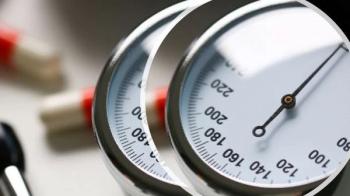
ACC/AHA Prevention Guidelines: Highlights of the Top 3 Changes
Many years in the making, the revised guidelines on preventing elevated blood cholesterol depart in significant ways from the last version of the NHLBI's ATP III. Here, the top 3 differences primary care physicians will want to know more about.
The long-awaited revisions to what were once known as the NHLBI’s ATP IV guidelines on management of cholesterol in adults have finally been released and are creating quite a stir! In a major departure from the previous guidelines, the new document has eliminated lipid targets altogether and is instead using a more lenient risk score to meet indication for statin therapy, utilizing new definitions of outcomes, and recommending statins as medications over other lipid lowering medications.
The
- Change in outcomes of interest
Previously, outcomes of interest were limited to coronary heart disease outcomes (such as myocardial infarction or cardiovascular death).The new guidelines now include stroke for a more comprehensive “atherosclerotic cardiovascular disease” (ASCVD) composite as an endpoint when assessing 10-year risk.
- Risk categories rather than cholesterol targets
According to the new guidelines, all individuals should be risk stratified and should receive lipid lowering therapy based on their ASCVD risk category: low (<5% 10-year risk); moderate (5-7.5% 10-year risk); or high (>7.5% 10-year risk). Risk can be assessed using arevised prediction calculator 2 which is essentially a slightly modified version of the Framingham Risk Score.
Based on the number needed to treat and the number needed to harm, the new threshold for treating with high-potency statins has now been lowered to a 10-year risk of ASCVD of 7.5%, replacing the previous threshold of 20%. Low-risk individuals who have a <7.5% 10-year ASCVD risk do not meet the indication for statin therapy, except in one of the situations listed in #3, below.
In the intermediate 10-year risk category (5-7.5% 10-year ASCVD risk), additional tests such as carotid intima media thickness or coronary calcification can be considered to determine whether treatment with statin therapy is indicated.
- Statin as first-line therapy
As a result of the mixed data from trials of “other” lipid-lowering medications, such as niacin and ezetemibe, the guidelines committee now recommends statin therapy alone for primary and secondary prevention.
The potency of statin therapy can be chosen based on the individual's risk category (low- vs high-risk), except in the situations below, which automatically qualify a patient for a moderate- to high-potency statin:
a. Adults aged 40 to 75 years with a history of previous atherosclerotic heart disease (such as MI, stroke, etc)
b. Adults >40 years without a history of previous atherosclerotic heart disease, but with an LDL-C>190 mg/dL.
c.Adults aged 40 to 75 years with a history of diabetes mellitus.
In summary, these new much simpler guidelines have shifted the focus from cholesterol targets (“know your number”) to risk categories (“know your risk”) and from all lipid lowering medications to statins alone.
References:
- Stone NJ, Robinson J, Lichtenstein AH, et al. 2013 ACC/AHA Guideline on the Treatment of Blood Cholesterol to Reduce Atherosclerotic Cardiovascular Risk in Adults.
J Am Coll of Cardiol. (2013), doi: 10.1016/j.jacc.2013.11.002. 2013 Prevention Guidelines Tools: CV Risk Calculator
Newsletter
Enhance your clinical practice with the Patient Care newsletter, offering the latest evidence-based guidelines, diagnostic insights, and treatment strategies for primary care physicians.




















































































































































































































































































